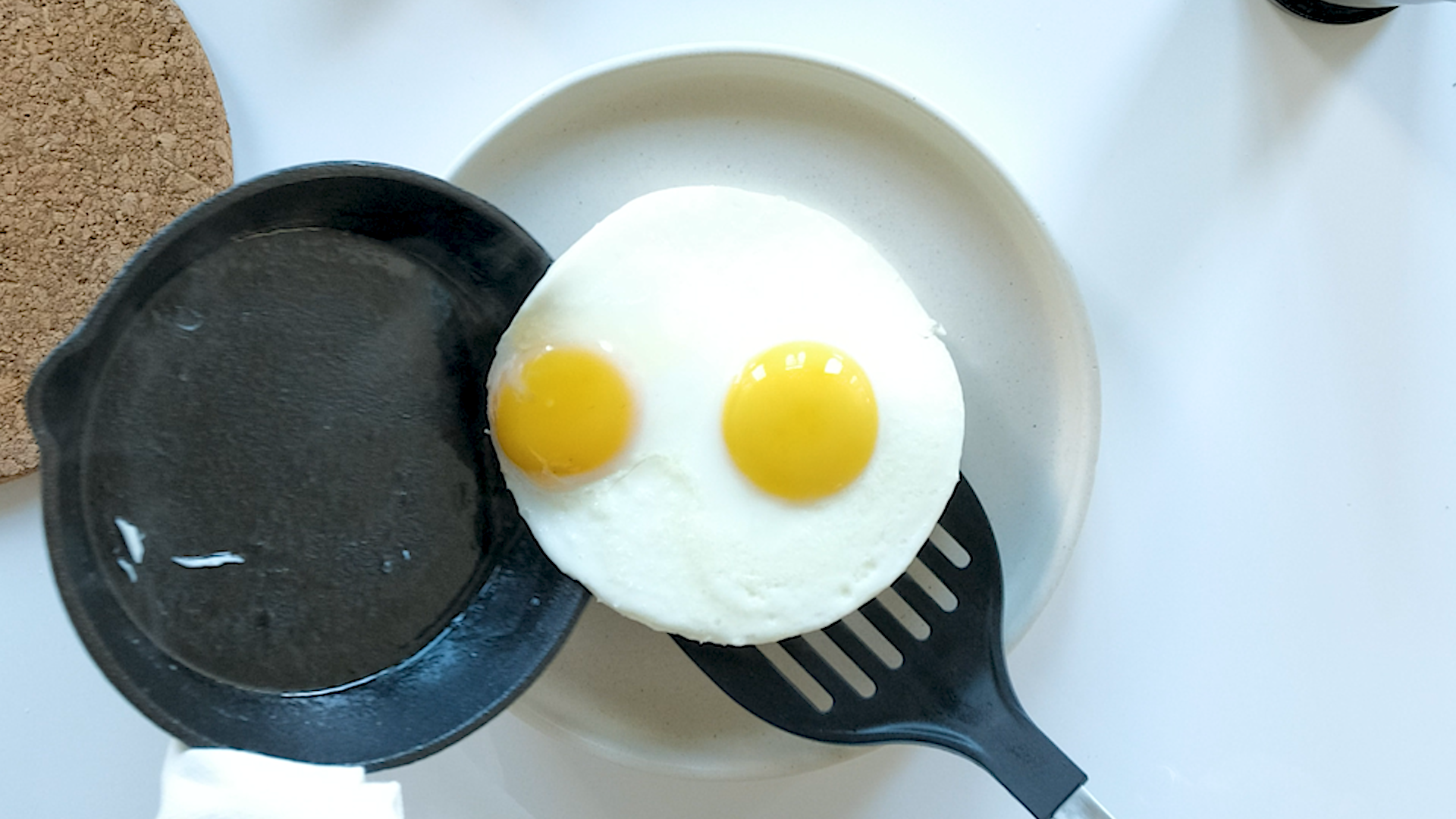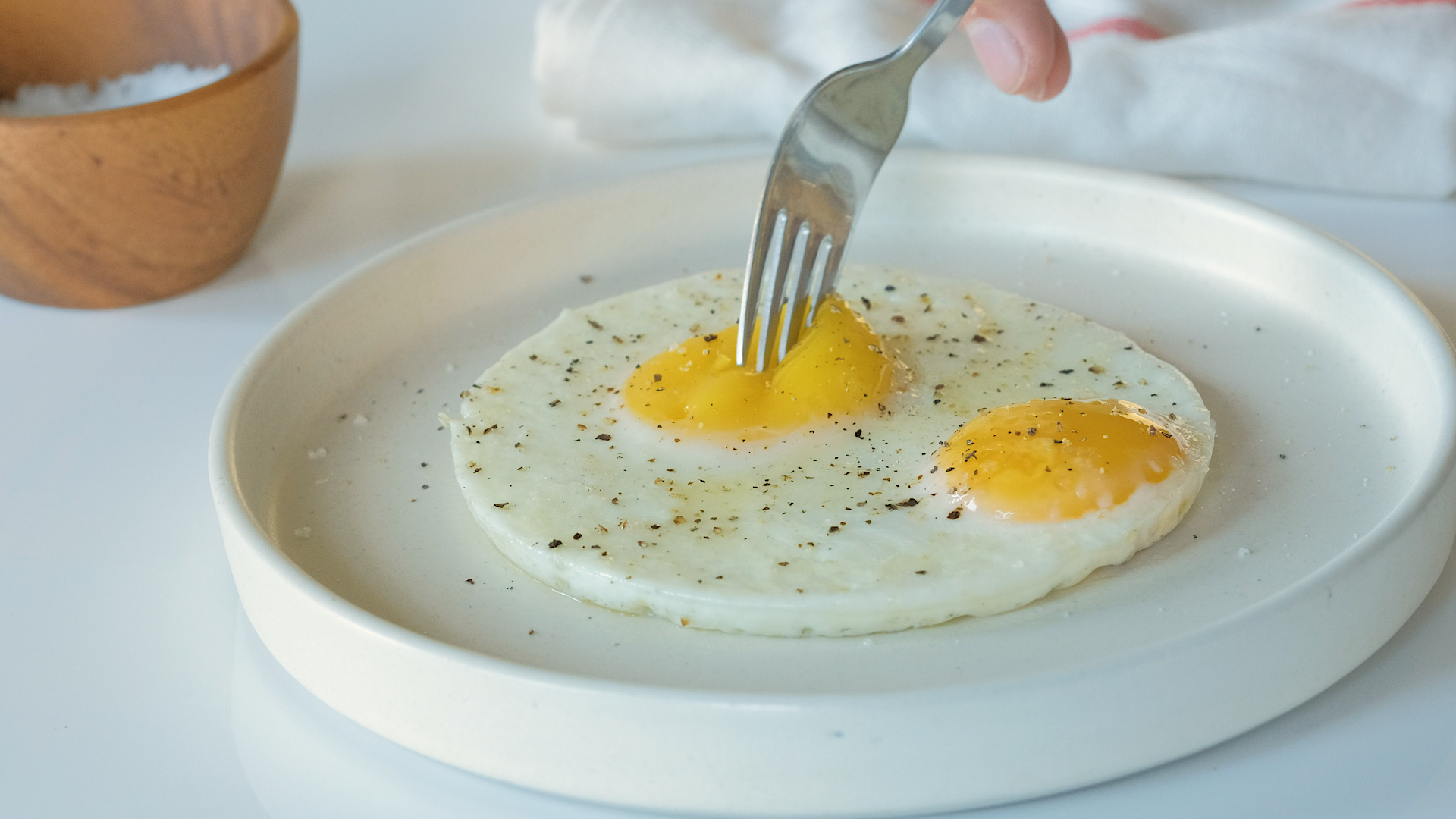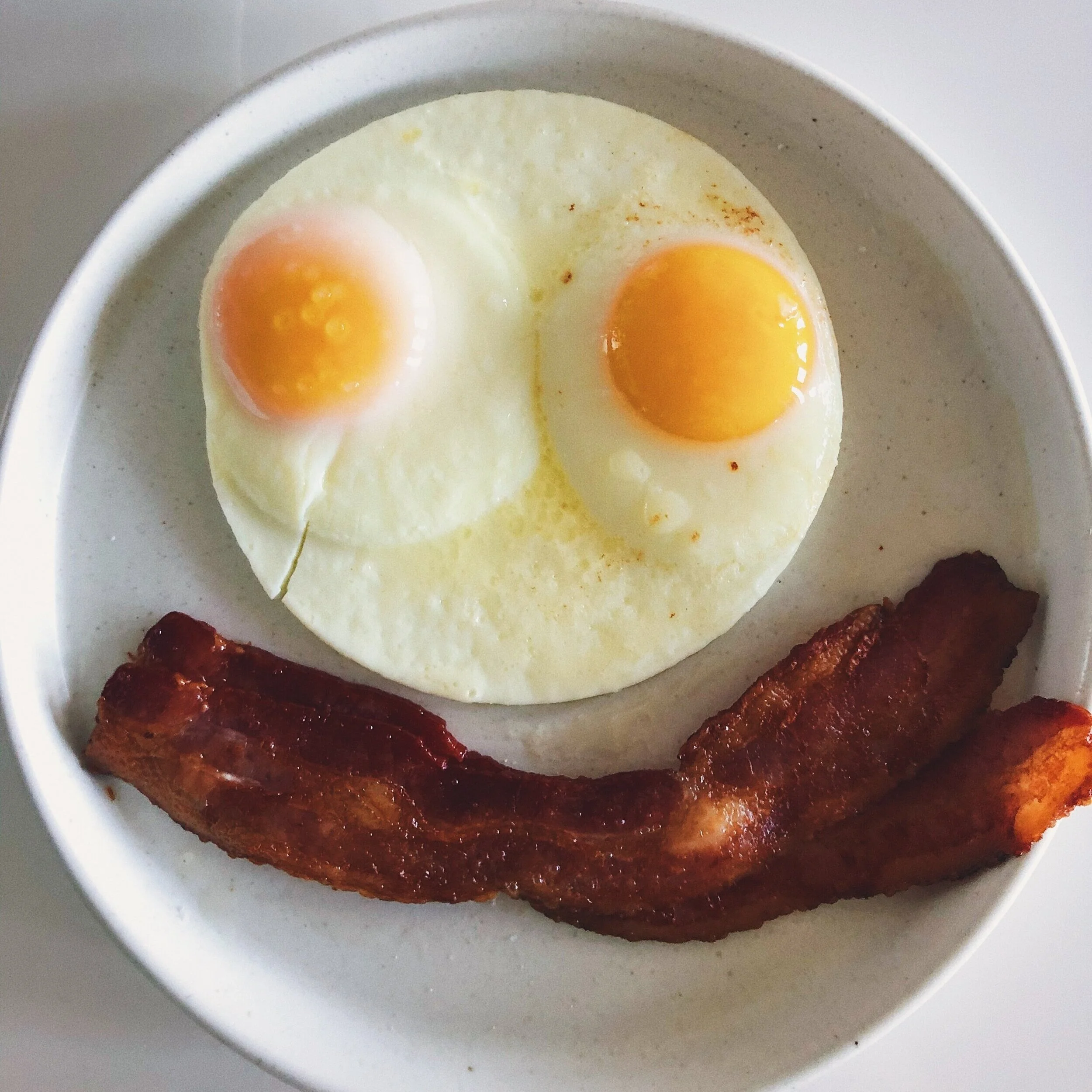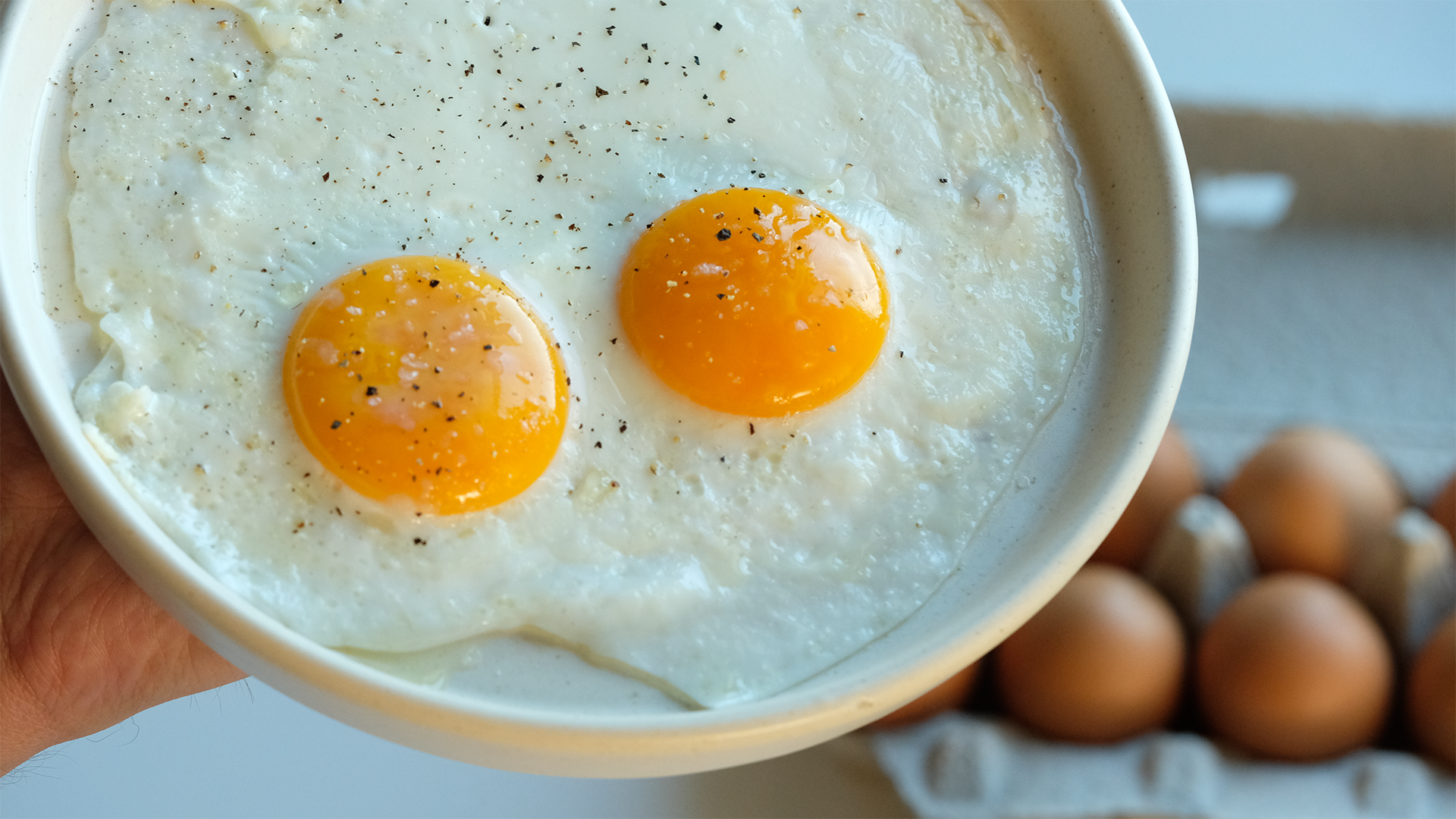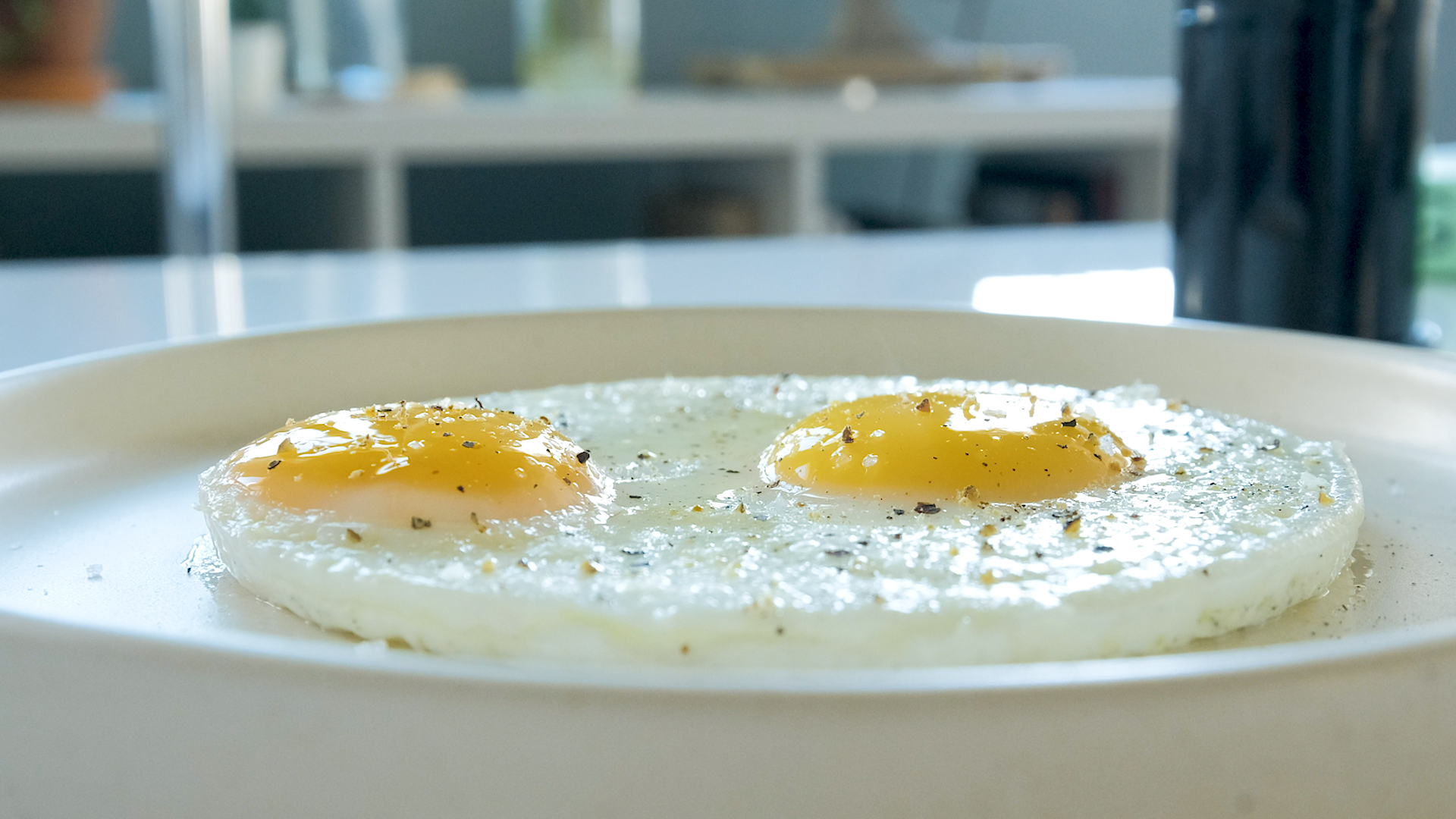Sunny Side Up: A Guide to a Perfectly Fried Egg
Hey there breakfast lover! Here’s how to make incredible sunny side up eggs.
Sunny side up is my favorite way to eat eggs in the morning. However, for the longest time, I was too scared to try to make these at home. What if I undercooked them? Would I catch salmonella? Will this new chicken-related illness cause me to grow feathers? What will my friends and family think? I digress…
Well, After extensive research and testing at home, I finally came across what I believe to be the best way to cook fried eggs and I couldn’t be happier with the result. I hope you find this technique to be fun and delicious. Your breakfasts will never be the same…
Video Tutorial: How to Make Fried Eggs
After a lot of experimenting, I’ve found what I believe to be the best way to make fried eggs. I hope you enjoy them!
How to Make Fried Eggs: What You’ll Need
First things first, let’s gather up our ingredients and tools.
Tools::
Cast Iron Skillet
Spatula
Two Small Bowls
Ingredients:
2 Fresh Eggs
Butter (1 Tbsp)
Salt
Fresh Cracked Black Pepper
How to Make Fried Eggs: Quick Recipe
Here’s how to quickly make fantastic sunny side up eggs:
Crack eggs into small bowls.
Melt butter into a skillet over medium-low heat.
Add eggs to skillet. Once the bottoms begin to turn white, move to a 375° F (190°C) oven.
Pull eggs out of the oven after about 4 minutes, or until all of the whites are cooked through.
Move to plate, add salt and pepper.
Enjoy!
Boom. There you have it, perfectly cooked eggs that are beautiful, delicious, and fun to create.
How to Make Fried Eggs: Step-by-Step
Pictures make everything easier to understand. Here’s a quick breakdown of the process of cooking these eggs.
Step 1: Crack Eggs into Small Bowls.
Simply crack your eggs into small bowls. This will allow you to fish out any eggshells before the eggs hit the pan. If you crack your eggs directly in the pan you run the risk of a rouge shell finding its way into the egg, and that is bad news.
Step 2: Melt butter in a skillet over medium-low heat.
Melt butter in a cast-iron skillet over medium-low heat. Be sure to give your cast iron plenty of time to heat up before adding in the butter. If you don’t have a cast iron you can use a non-stick pan, but just make sure it is oven safe.
Step 3: Add eggs to skillet. Once the bottoms begin to turn white, move to a 375° F (190°C) oven.
Gently drop your eggs into the skillet with the melted butter. You’ll have a few seconds to move your egg yolk around to the center of the skillet if you don’t quite get it right on the drop. If the egg begins to bubble, your pan is too hot.
Once the bottom of the egg turns white, place the skillet in an oven at 375° F (190°C). Place the eggs in the middle of the oven, not too close to the heat coils on top. You want the hot air to cook the whites on top and lightly cook the outside of the yolk.
Step 4: Pull eggs out of the oven after about 4 minutes, or until all of the whites are cooked through.
Slide those eggs right onto your plate.
Step 5: Move to plate, add salt and pepper.
Pull the eggs from the oven and immediately place them on a plate. If you leave them in the cast iron skillet the yolk will begin to cake. The egg should slide right off and onto your plate. Add some finishing salt and fresh cracked pepper.
Step 6: Enjoy!
This part is easy. Just eat the eggs. Note: Be sure to breathe between bites.
Step 7: (Optional): Add bacon to your plate to make a smiley face.
One crucial step in our house is adding a bacon smiley face.
Warning! You’re Entering the Nerdy Section!
The first time I was ever asked how I wanted my eggs to be cooked I was sitting in the non-smoking section of a Waffle House in Missouri. Upon being asked the question, I thought about it, looked at the menu for inspiration, and promptly said 'sunny side up please'. In truth, I ordered the eggs not because I liked barely set egg whites with runny yokes, rather I was just spouting out the only way to cook an egg that I knew. Don't blame me I was 7...
Fast forward a few decades and I've now learned that there are many more ways to cook an egg than simply Sunny Side Up.
Fun Random Fact: Each fold on a chef's hat are said to represent the 100 different ways you can cook an egg.
One of my favorite ways to cook an egg is fried, but for the longest time, I simply couldn't make a good fried egg. The whites would be runny. The yoke would break. I would overcook the egg. If I had a nickel for the number of times my fried eggs were forced to turn to scrambled I would have many nickels (I know, great metaphor).
I'm sure that you can relate, so I thought it'd be fun to research, test, and prepare the best fried egg possible. I hope that you find this to be fun.
What Makes a Fried Egg Delicious?
Eggs, unlike music, are better when you blend modern trends with a traditional country influence. As such, this article defines great fried eggs by the following attributes.
Perfectly Cooked Whites
Runny Yoke
Salt
Added Fat (Butter or Oil)
Correct Serving Temperature
Color
Optional: Other Ingredients like pepper, oregano, and fresh herbs.
The Science of Fried Eggs
The science behind fried eggs starts with the molecular makeup of an egg. There are technically 8 distinct parts of an egg, but for the sake of your sanity we're only going to focus on 3: The white, the yolk, and the yolk membrane (AKA the vitelline membrane, yummy...)
An egg white is 88% water, 11% protein, 1% minerals, and basically contains basically no fat. When frying an egg the egg white must reach a temperature of 144 degrees, or if you live in Phoenix you can just leave the egg outside on the sidewalk.
Once the eggs hit 144°F the proteins will unravel and break down the chemical bonds between the amino acids in the egg leading to a thickened white. Nerds call this denaturation, chefs call this 'setting', and normal people just call this cooking. A denaturized egg has almost double the 'bio-availability' meaning your body can absorb more of the proteins. That protein fact was confirmed by a bodybuilder so you know it’s true.
An egg yolk, on the other hand, is comprised of around 42% water, 33% fats (lipids), 17% proteins, & 2% vitamins. This is why egg yolks taste richer and (quite frankly) better than egg whites. The lectin content in egg yolks is also why they assist in the emulsification (blending) of butter and acid (citrus or vinegar) to create hollandaise sauce, but we'll talk about that some other time. When frying an egg the goal is to heat up your egg yolk to emulate a fatty sauce for your egg whites suspended in a spherical protein shield. Fancy!
The Vitelline Membrane is a clear casing that covers the yolk. A firm membrane is important because it makes it less likely for you to accidentally break a yolk. Fresh eggs will have a more firm membrane because the membranes slowly break down over time inside the egg. So keep it fresh.
If you value flavor at all, salt should be present in almost any dish you create, this includes eggs. When salt is present in a dish our taste receptors become more sensitive. We like food better when it has salt in it and salt gives us a 'tasting' superpower to detect subtle flavors. This is why bland food tastes more interesting with salt.
For our recipe, we will simply be using a flaky finishing salt called Maldon salt. This will also give your eggs a bit of a crunchy texture. Some people prefer to add salt in the pan while the egg is cooking, and to that, I say... cool beans.
Note: Do not ever use iodized salt for cooking. Yes, iodine is an essential ingredient, but you can receive more than enough iodine from consuming fish, dairy, and bread. The iodine industry has successfully lobbied to have 'this product does not contain iodine, an essential ingredient' on salt in America, but this has everything to do propagating the iodine industry, and less to do with health or flavor. In your kitchen, you should have a kosher salt for cooking and a finishing salt for plating. Ok, I’m stepping off my soapbox…
The goal of a perfectly cooked fried egg is to unravel the proteins in the whites without unraveling the proteins in the yolk. You will add salt to increase the flavor and add oil (butter) to make the eg even more delectable.
Cracking the Egg
If you've ever watched a TV show about food then you've probably seen your fair share of people cracking an egg over a pan directly onto their skillet. This is an understandably fast way to crack an egg if you're in a hurry, but it has a major flaw. If you accidentally leave a shell in the pan, you basically have to destroy your egg to get it out. No bueno…
A much better way, and a way recombined by Thomas Keller, is to crack your eggs into a small bowl before introducing them into a pan. If you accidentally drop in a shell you can easily fish it out without wasting the entire egg.
Sight
Your food should look good to be fully appreciated. In an ideal world, a fried egg will have 2 main colors, white and yellow/orange. Food, like graphic design, is ruled by the laws of color theory; Meaning your eyes are naturally programmed to find balance and appreciation if the colors balance. Now we could get really nerdy into the science of color theory, but that would probably be beyond the scope of this article. Just kidding, we're totally going to talk about it.
Using some basic color theory techniques we can see a few of the best plating choices for fried eggs. It's important to note that humans are drawn to contrast. As such, it's usually advised to pick a plate that will emphasize the color 'pop' of your eggs without upstaging the eggs. As such, greys and pastels tend to work best for egg dishes. If you want to play with a really fun color tool check out coolors.co. They are a great place for color inspiration for food and really anything else.
In addition to the color of your egg, the visual 'texture' of your egg also plays a big role in determining the enjoyment of your egg. An egg that looks 'slimy' or 'damaged' will not be as enjoyable as an egg with superior visuals. Again, a good fresh egg choice can dramatically change the texture of an egg.
Feel / Texture
What does the perfect fried egg feel like? Well, feeling starts way before you put the egg in your mouth. From the first moment that you contact your fork to the egg, your brain is starting the visual process of 'eating' your egg. As such, a great egg shouldn't be so viscous that your fork goes right through without resistance. On the flip side, you should minimize the hard proteins found on the edges of a fried egg so that cutting through the egg isn’t difficult. An egg that has fried stringy edges that can't be cut is kinda gross.
It should also be noted that your eggs should be served warm. As such, eggs should be the final thing you cook before serving. I also recommend leaving your plates in the oven on their lowest setting, as fried eggs are very poor at retaining heat. Cold hardboiled eggs are delicious. Cold fried eggs are just gross.
Like it or not when you are making food your primary objective is not to make the best food possible, that is a noble goal, but it's only second to telling an incredible story. Study after study confirms that a good story makes food taste better. And it's our pleasure to think about our food in this manner.
When you're making eggs what story are you trying to tell? Is it a rustic breakfast designed to remind you of 'grandma's' house? An elevated brunch experience celebrating fresh foods with gastronomic innovations? A minimal display of perfected plating? or a busy breakfast smorgasbord?
From the background music (I'm dead serious) to the types of napkins you choose, you are inviting your guests into your artistic creation. The best restaurants understand this concept and that’s why the busiest places rarely have the best food.
I personally love to play music related to the food story I am trying to tell for starters. Here are a few of our favorite morning time playlists on Spotify:
I hope you've found this guide to be helpful. It was a blast to put it together. I hope you have an egg-scelent day. if you’d like to subscribe for more recipes, wine recommendations, art tutorials, and more just fill out the form below. Thanks for being awesome and stay curious!
Alright, that’s all yolks!





